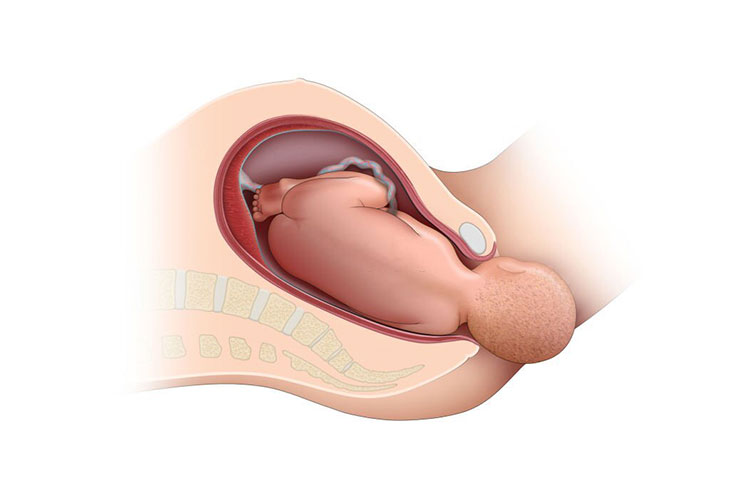Labor induction is a crucial intervention in certain pregnancy scenarios.
Understanding the reasons, procedure, and associated risks is vital for expectant parents and healthcare providers alike.
While labor induction can be life-saving, it also entails potential risks. As such, informed decision-making and essential knowledge are must-haves in childbirth.
Keep scrolling to learn more about this practice.
What Is Labor Induction?

Labor induction is a medical way of starting childbirth before it happens on its own. It’s done when there are health concerns for the mom or baby.
The goal is to have a vaginal delivery by making the uterus contract.
Doctors use medicines or physical methods to do this. Close monitoring and good medical care are important during the induction of labor to keep both the mom and baby safe.
What Are The Reasons For Labor Induction?
Late-Term Pregnancy
A pregnancy extending beyond 41 weeks is considered late-term or post-term. Prolonged pregnancies can increase the risk of complications during delivery.
Premature Rupture Of Membranes (PROM)
PROM happens when the water sac around the baby breaks before 37 weeks of pregnancy and before labor starts.
Without amniotic fluid, infection is a risk for both the baby and the mother.
Multiple Births
Expecting twins or other multiples can cause delivery and health issues for babies and mothers.
Hypertensive Disorders
Preeclampsia, characterized by elevated or irregular blood pressure levels during pregnancy, poses serious risks to both the mother and baby.
Diabetes Or Gestational Diabetes
In cases of diabetes, especially gestational diabetes, where the mother’s insulin production is reduced, the infant has an increased risk of complications.
Fetal Growth Restrictions
There are situations where the baby may not be growing properly in the womb.
Inducing labor might be necessary to deliver the baby and provide appropriate medical care if growth restrictions are detected.
Abruptio Placentae
This condition occurs when the placental abruption happens. It separates prematurely from the uterine wall, causing significant blood loss and limiting oxygen and nutrients to the baby.
Blood Disorders
Certain blood-related issues, such as the RH Factor incompatibility between the mother and fetus, can lead to complications during pregnancy.
Thus, inducing labor in a controlled setting allows medical professionals to closely monitor the process and ensure the baby’s well-being.
They can also prevent potential complications and provide emergency medical attention if needed.
When To Induce Labor?
Labor or birth induction is done when there are health concerns or risks in the pregnancy. Recent studies suggest waiting until at least 39 weeks for induction, as it can be safer.
If induction is necessary, it’s best to talk to your healthcare provider about the right time for you.
What Are Types Of Inducement For Labor?
Membrane Sweep
A membrane sweep is also known as a “stretch and sweep.”
The provider inserts a gloved finger into the cervix and uses a gentle, circular motion to separate the amniotic sac from the walls of the uterus.
This action releases natural hormones called prostaglandins. It can help soften and prepare the cervix for labor.
The process might trigger some discomfort or mild pain, but it usually lasts only for a short time.
It is a natural way to encourage labor to begin without medical induction.
Some studies suggest that having a membrane sweep can reduce the likelihood of needing medical induction past the due date.
Foley Catheter
A Foley catheter is a small bulb with a tub and balloon that doctors use to stretch the cervix gently. It doesn’t directly cause contractions but prepares the cervix for labor.
If hormone-induced contractions didn’t work before, this Foley bulb method might be recommended.
The insertion is done in a hospital or clinic, which might bring you discomfort and cramping. After 12 to 24 hours, you have to return to the hospital.
Prostaglandins
Prostaglandins are hormones that your body produces naturally. Doctors can use a synthetic form to help “ripen” the cervix, making it softer and more open for labor.
There are three ways they use it:
- A gel placed in the vagina
- Medication on a tab (Cervidil)
- A pill swallowed or placed under the tongue.
These methods sometimes ignite strong or close contractions, affecting the baby’s heartbeat. Thus, doctors will monitor you and the baby while using prostaglandins.
Besides, you might stay in the hospital for safety.
Oxytocin (Pitocin)
Oxytocin, or Pitocin, is a hormone that helps the uterus contract during labor. The body naturally produces it.
If the cervix is ready for labor, doctors may use oxytocin through an IV to strengthen contractions.
However, they are careful because it can increase the chances of needing a C-section.
The doctors have to monitor continuously to ensure the baby’s safety, as the release of oxytocin can affect the baby’s heart rate.
Remember only to use oxytocin when the cervix is favorable for labor to avoid complications.
Amniotomy
Amniotomy is a procedure where the doctor uses a special hook to break the amniotic sac, letting the fluid come out. It’s uncomfortable but not painful.
This is usually done when the cervix is ready for labor, and oxytocin is used to keep contractions regular.
Once the water is broken, labor must progress steadily to avoid infection risks.
There’s also a small risk of the umbilical cord dropping into the vagina, so an amniotomy is done in a hospital or clinic where the baby can be monitored to ensure safety.
Labor Induction Process

1. Evaluation And Preparation
The healthcare provider evaluates the woman’s medical history, current health, and the baby’s condition to determine if labor induction is necessary and safe.
If the cervix is not ready for induction, the provider may start with a cervical ripening agent to prepare the cervix for labor.
2. Cervical Ripening
The doctors will use Prostaglandins, hormones that soften and thin the cervix.
They will put it through the vagina, orally or using a catheter with an inflatable balloon inserted into the cervix.
The provider may also use sweeping the membranes to help initiate labor.
3. Amniotomy (Rupture Of Amniotic Sac)
The provider may perform an amniotomy if the cervix is partially dilated and thinned, and the baby’s head is deep in the pelvis.
With an amniotomy, the provider makes a small opening in the amniotic sac, causing the water to break, which might help labor progress.
4. Oxytocin Administration
In some cases, the healthcare provider may administer synthetic oxytocin for labor induction (Pitocin) through an IV to stimulate contractions and progress labor.
5. Monitoring
Throughout the birth induction process, the baby’s heart rate and the progress of contractions are closely monitored to ensure the well-being of both the mother and the baby.
This can be done externally using a monitor placed on the mother’s abdomen or internally through a small electrode attached to the baby’s scalp.
6. Delivery
Labor induction usually leads to a vaginal birth, and the baby is delivered safely.
However, suppose labor induction does not end up with a vaginal birth.
In that case, it may be considered a “failed induction,” and the healthcare provider may discuss alternative options, such as trying another induction method or considering a cesarean section (C-section) for delivery.
What If Labor Induction Doesn’t Work?
In some cases, induction of childbirth doesn’t work. When this happens, the healthcare team will carefully assess the situation.
They will reevaluate the woman’s condition, the baby’s well-being, and the reasons behind the unsuccessful induction.
They will consider factors such as the mother’s cervix readiness, the baby’s position, and any other relevant medical conditions.
Below are the two best courses of action for the safety of both the pregnant women and the baby:
- Another induction attempt: In some cases, the healthcare team may suggest trying a different method of labor induction to see if it leads to successful contractions and progress toward delivery.
- Cesarean section (C-Section): If the cervix is not favorable for induction, the baby’s position is not optimal, or concerns about the baby’s well-being, the healthcare team may recommend a cesarean deliveries.
A C-section is a surgical procedure in which the baby is delivered through an incision in pregnant women’s abdomen and uterus.
What Are The Risks Of Labor Induction?

Infection
During labor induction in women, procedures like breaking the amniotic sac (amniotomy) or using medical instruments to ripen the cervix can create pathways for bacteria to enter the uterus.
This increases the risk of infection for both the parent and the baby. Infections can entail complications such as:
- Fever
- Chorioamnionitis (infection of the amniotic fluid)
- Postpartum hemorrhage for the mother
For the baby, sepsis or pneumonia can stem from infections.
Uterine Rupture
Uterine rupture is a rare but serious complication of inducing labor. It occurs when the uterus tears along a previous scar (previous C-section or other uterine surgeries).
High doses of oxytocin for induction to stimulate contractions may increase the risk of uterine rupture.
It can trigger heavy bleeding and endanger both the parent and the baby, often requiring emergency surgery.
C-Section Risk
Stronger and more intense contractions are more likely to happen with labor induction than natural labor.
The baby’s heart rate shows signs of distress or if the labor does not progress as expected.
Thus, the healthcare provider may recommend a C-section to avoid potential complications.
C-sections carry their own risks, including infections, blood loss, and longer recovery time for the parent.
So it’s best to discuss with the healthcare provider to know exactly the pros and cons of labor induction in your state.
FAQs
Is Labor Induction Painful?
Labor induction can be more painful than natural labor. Contractions can be stronger and more intense when labor is induced, increasing discomfort.
However, pain tolerance varies among individuals.
What Are Some Side Effects Of Labor Induction?
- Stronger and closer contractions: The medications used may cause stronger and more intense contractions, which can be more painful for the parent.
- Baby’s heart rate: The baby’s heart rate may be affected by intensified contractions.
- Umbilical cord prolapse: Rupturing the amniotic sac can lead to the umbilical cord slipping out before the baby. It can interfere with the baby’s oxygen and nutrient supply.
- Infection risk: If labor doesn’t start within a specific time frame after the amniotic sac rupture, there is an increased risk of infection for both the parent and the baby.
Is Inducing Labor Bad?
Inducing labor is not bad, but it is a medical intervention that should be used when necessary. It can ensure the safety and well-being of both the parent and the baby.
However, labor induction can have risks and should be carefully considered and discussed with the healthcare provider.
How Long Does A Labor Induction Last?
In most cases, active labor, where the cervix dilates to about 6 centimeters. This usually occurs within 24 hours of the induced labor procedure.
Labor induction can take minutes to hours, and the healthcare provider will adjust the approach accordingly.
Conclusion
In conclusion, labor induction is done when there are concerns for the health of the parent or the baby.
While it can be a helpful intervention in certain situations, it is essential to carefully consider the benefits and risks before proceeding.
And remember to consult your doctor.
Trusting the expertise of healthcare professionals and staying informed empowers parents to make the best choices for a safe and positive birthing experience.
